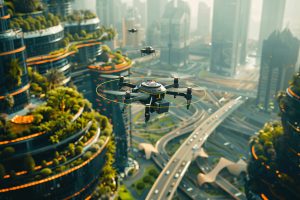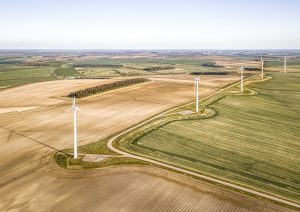The conservation of cultural and archaeological heritage is a global challenge that requires precision, efficiency, and safety. By putting drones at the service of conservation, it is now possible to document, analyze, and protect historical sites in an innovative and sustainable way. They have become allies for archaeologists, restorers, and entities dedicated to preserving historical heritage.
Let’s explore their main applications, benefits, and best practices for preserving history with the help of technology.
1. Practical applications of archaeological drones
Inspection and documentation of historical monuments
Capturing videos and images with drones provides a comprehensive view of the state of conservation of monuments, facades, and sculptures. This allows specialists to detect cracks, spalling, or structural damage without the need for scaffolding or direct contact with fragile surfaces.
This minimizes the possibility of accidental damage to ancient or hard-to-reach structures.
Creation of 3D models for restoration
One of the most powerful applications of drones in archaeology and restoration is the generation of detailed 3D models. Thanks to aerial photogrammetry, accurate digital representations of ruins, temples, or archaeological sites can be created.
Accessibility to difficult areas
Some of these elements are located in remote, mountainous, or limited-access environments. Drones facilitate aerial inspection of these areas without disturbing the environment. This is especially useful in recent excavations or structures at risk of collapse.
Environmental and anthropogenic monitoring
Drones make it possible to analyze the impact of natural and human factors on heritage sites. They can detect levels of erosion, humidity, pollution, or vegetation growth that threaten monuments.
This allows authorities to anticipate structural damage and design more effective preservation strategies.
Constant monitoring and damage prevention
With regular scheduled flights, drones enable constant monitoring of the condition of cultural heritage sites. The data collected helps identify early signs of vandalism or environmental changes before they cause irreversible damage.
This preventive approach makes drones a strategic tool for the long-term management and conservation of historic sites.
Cultural and educational dissemination
Beyond conservation, drones open up new opportunities for the dissemination of cultural heritage. Aerial images, immersive videos, and 3D models can be used to create virtual tours and educational experiences accessible from anywhere in the world.
This promotes sustainable cultural tourism and raises awareness of the importance of protecting our historical legacy.
2. Types of drones recommended for heritage preservation
Selecting the right drone is key to obtaining quality results in cultural heritage conservation:
- Drones with high-resolution cameras: Ideal for capturing architectural details, textures, and ornaments clearly.
- Multispectral drones: These allow for the analysis of vegetation, erosion, and environmental changes, which are crucial in outdoor archaeological sites.
- Drones with LiDAR technology: These scan the terrain and detect structures hidden under vegetation or soil, making them essential for archaeological prospecting work.
- Compact and rugged drones: Perfect for interiors or confined spaces, such as temples, caves, or ruined structures where maneuverability is required.
Each type of drone offers specific advantages that, combined with advanced analysis software, maximize the accuracy and efficiency of conservation work.
3. Best practices for operating drones in archaeological and cultural areas
The responsible use of drones in heritage environments requires following certain protocols that ensure safety, legality, and respect for the historical environment:
- Obtain legal permits: Many archaeological sites are protected by heritage laws that require specific authorizations for drone flights.
- Maintain a safe distance: Avoid getting too close to fragile structures or sensitive areas, reducing the risk of accidental impacts.
- Select the right drone: Choose the most appropriate model for the type of mission (photography, LiDAR, multispectral mapping, etc.).
Applying these best practices not only ensures regulatory compliance, but also strengthens trust between cultural institutions and technology operators.
4. Impact of drones on cultural heritage preservation
The introduction of drones has revolutionized heritage conservation technology. Among the main benefits are:
- Faster and more accurate documentation and protection of sites at risk.
- More in-depth archaeological studies, thanks to aerial imagery, 3D models, and multispectral data.
- Optimization of heritage management, as the data obtained with drones allows for the creation of georeferenced databases to better plan interventions and prioritize resources.
- Boosting interdisciplinary collaboration, encouraging joint work between archaeologists, engineers, restorers, and aerial technology specialists to develop more comprehensive conservation strategies.
The combination of drones, advanced sensors, and 3D modeling software is transforming the way we understand, study, and protect cultural heritage, making conservation more efficient, safe, and sustainable.
In summary
Drones for cultural and archaeological heritage conservation represent a bridge between history and innovation. Their ability to document, monitor, and analyze historical places with high precision makes them essential allies for the preservation of collective memory.
At our aeronautical consulting firm, we develop customized solutions to integrate drones into conservation projects, combining advanced technology with strategic planning to optimize each operation.
The future of heritage preservation is technological, collaborative, and sustainable, and drones are at the heart of this new era.



